issue contents
July 2008 issue

Cover illustration: A putative molybdenum-cofactor biosynthesis protein C (MoaC) from Sulfolobus tokodaii (ST0472) (Yoshida et al., p. 589).
protein structure communications
The crystal structure of Ynk1, an NDPK from the yeast Saccharomyces cerevisiae, has been solved at 3.1 Å resolution.
PDB reference: Ynk1, 3b54, r3b54sf
The structures of complexes of the copper-containing amine oxidase from A. globiformis with benzylhydrazine and tranylcypromine have been refined at 1.86 and 1.65 Å resolution, respectively.
The crystal structure of Escherichia coli AcrR with space group P31, which is distinct from our previously reported P2221 space-group structure, has been determined. A comparison of these two structures reveals possible mechanisms of ligand binding and AcrR regulation.
PDB reference: AcrR, 3bcg, r3bcgsf
The crystal structure of a putative molybdenum-cofactor biosynthesis protein C (MoaC) from S. tokodaii (ST0472) was determined at 2.2 Å resolution.
PDB reference: MoaC, 2ohd, r2ohdsf
crystallization communications
Native zinc-containing ATP sulfurylase from D. desulfuricans ATCC 27774 was purified to homogeneity and crystallized. Diffraction data were collected to 2.5 Å resolution.
The α-haloacid dehalogenase DehI from P. putida strain PP3 was cloned into a vector with an N-terminal His tag and expressed in E. coli Nova Blue strain. Purified protein was crystallized in a primitive monoclinic form and a complete native data set was collected and analysed.
The GppNHp-bound Rab27a GTPase in complex with exophilin4/Slp2-a has been purified and crystallized. Preliminary crystallographic analyses have been performed at 1.8 Å resolution.
The production and crystallization of the tetratricopeptide-repeat domain of human small glutamine-rich tetratricopeptide-repeat protein are reported. A 2.4 Å native diffraction data set has been obtained.
Trigonal crystals of MJ0729 showing different degrees of merohedral twinning that may vary from perfect hemihedral twinning to perfect tetartohedral twinning were obtained upon slight variation of the pH.
Crystals of arylmalonate decarboxylase from A. bronchisepticus were obtained which diffracted X-rays to a resolution of at least 3.0 Å.
Attempts have been made to crystallize the ligand-binding domain of the human retinoid X receptor in complex with a variety of newly synthesized ligands. An inverse correlation was observed between the `crystallizability' and the structural dynamics of the various receptor–ligand complexes.
Crystals of the LOV1 domains of phototropin 1 and 2 from A. thaliana were obtained which diffracted X-rays to a resolution of at least 2.1 Å.
Class II release factor 3 (RF3) from the sulfate-reducing bacterium D. vulgaris Miyazaki F has been overexpressed, purified and crystallized in complex with GDP.
Site-directed mutagenesis has been applied to improve the overexpression and purification of the icosahedral enzyme lumazine synthase from B. subtilis as well as to produce a new crystal form. The mutant protein crystallizes in space group R3 and diffracts X-rays to 1.6 Å resolution.
The genetically encoded fluorescent calcium-indicator protein GCaMP2 was crystallized in the calcium-saturated form. X-ray diffraction data were collected to 2.0 Å resolution and the structure was solved by molecular replacement.
The ferredoxin component of carbazole 1,9a-dioxygenase (CARDO-F) is involved in an electron-transfer reaction. The CARDO-F from Novosphingobium sp. KA1 was crystallized under anaerobic conditions and diffracted to a resolution of 1.9 Å.
Native and selenomethionine-derivative Abn2 have been expressed, purified and crystallized. Solution of the selenium substructure allowed the calculation of an initial experimental map at 2.7 Å resolution.
Recombinant NUDT16 from human was expressed, purified and crystallized. The native crystals diffracted to 2.1 Å.
The crystallization of ginnacin, the 11S seed storage protein from G. biloba, is reported.
The acidic polygalacturonase PehA from A. vitis has been crystallized. A molecular-replacement solution indicated a right-handed parallel β-helix fold.
Orthorhombic crystals of a PduO-type ATP:cob(I)alamin adenosyltransferase from B. cereus were obtained both as an apoenzyme and in the presence of Mg2+ and ATP.
The human voltage-dependent anion channel was overproduced in bacteria and refolded with the help of detergents. Extensive screening of crystallization conditions resulted in the first crystals to be obtained of this voltage-dependent anion-channel type. The crystals diffracted to a resolution of 3.6 Å.
Truncation by the removal of the C-terminal hydrophobic transmembrane anchor has enabled the overexpression of a soluble domain of S. aureus YmfM in Escherichia coli, which has then been purified and subsequently crystallized.
Dihydrodipicolinate synthase (DHDPS), an enzyme of the lysine-biosynthetic pathway, is a promising target for antibiotic development against pathogenic bacteria. Here, the expression, purification, crystallization and preliminary diffraction analysis to 1.45 Å resolution of DHDPS from methicillin-resistant S. aureus is reported.
Urease from pigeon pea was purified and crystallized and X-ray diffraction data were collected at 2.5 Å resolution.
Mouse galectin-4 carbohydrate binding domain was overexpressed in E. coli and crystallized in the presence of lactose. The crystals belong to tetragonal space group P4212 and diffraction data were collected to 2.1 Å resolution.
Allene oxide synthase, an atypical cytochrome P450 from Parthenium argentatum, was crystallized and diffraction data were collected to 2.4 Å resolution.
Single crystals of recombinant S-adenosyl-L-homocysteine hydrolase from L. luteus in complex with adenosine diffract X-rays to 1.17 Å resolution at 100 K. The crystals are tetragonal, space group P43212, and contain one copy of the dimeric enzyme in the asymmetric unit.


 journal menu
journal menu











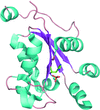



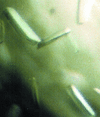
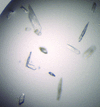





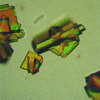





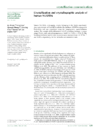










![[publBio]](/logos/publbio.gif)





